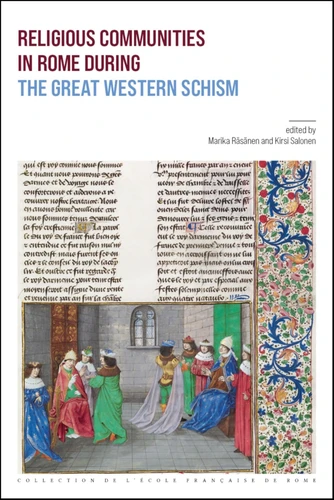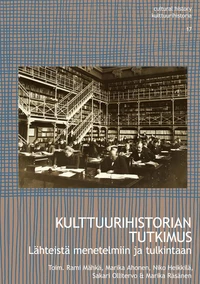Religious communities in Rome during the Great Western Schism
Par : ,Formats :
Disponible dans votre compte client Decitre ou Furet du Nord dès validation de votre commande. Le format Multi-format est :
- Pour les liseuses autres que Vivlio, vous devez utiliser le logiciel Adobe Digital Edition. Non compatible avec la lecture sur les liseuses Kindle, Remarkable et Sony
 , qui est-ce ?
, qui est-ce ?Notre partenaire de plateforme de lecture numérique où vous retrouverez l'ensemble de vos ebooks gratuitement
Pour en savoir plus sur nos ebooks, consultez notre aide en ligne ici
- Nombre de pages344
- FormatMulti-format
- ISBN978-2-7283-1853-7
- EAN9782728318537
- Date de parution26/08/2025
- Protection num.NC
- Infos supplémentairesMulti-format incluant PDF avec W...
- ÉditeurPublications de l’École français...
Résumé
The Great Western Schism (1378-1417) is considered the deepest crisis of the late medieval Church. The contested election of Pope Urban VI in 1378 divided the Catholic Church into two competing factions: the Roman papacy under Pope Urban VI and the French papacy under Clement VII. The Schism had severe consequences, especially for the Roman papacy: the papal administration in Rome lost most of its competent staff as many officials sided with Clement VII and returned to Avignon, leaving Pope Urban VI with a skeleton staff; the city of Rome and the surrounding countryside suffered from intense fighting; religious institutions were not only split in two during the Schism, but they also faced repeated economic hardships as mercenary troops ravaged the Roman countryside and the Roman popes extracted property from churches and monasteries to finance warfare, or donated the landed property of these institutions to their lay supporters in exchange for military services.
The effects of the Schism were largely harmful for the various religious institutions in Rome, but the overall picture is not necessarily that negative, as the Schism also presented new opportunities for different Roman actors. The current volume studies the resilience of the Roman papacy and its clergy, international religious and lay orders and the local community of Jews, and shows how these actors overcame the hardships caused by the Schism.
The effects of the Schism were largely harmful for the various religious institutions in Rome, but the overall picture is not necessarily that negative, as the Schism also presented new opportunities for different Roman actors. The current volume studies the resilience of the Roman papacy and its clergy, international religious and lay orders and the local community of Jews, and shows how these actors overcame the hardships caused by the Schism.
The Great Western Schism (1378-1417) is considered the deepest crisis of the late medieval Church. The contested election of Pope Urban VI in 1378 divided the Catholic Church into two competing factions: the Roman papacy under Pope Urban VI and the French papacy under Clement VII. The Schism had severe consequences, especially for the Roman papacy: the papal administration in Rome lost most of its competent staff as many officials sided with Clement VII and returned to Avignon, leaving Pope Urban VI with a skeleton staff; the city of Rome and the surrounding countryside suffered from intense fighting; religious institutions were not only split in two during the Schism, but they also faced repeated economic hardships as mercenary troops ravaged the Roman countryside and the Roman popes extracted property from churches and monasteries to finance warfare, or donated the landed property of these institutions to their lay supporters in exchange for military services.
The effects of the Schism were largely harmful for the various religious institutions in Rome, but the overall picture is not necessarily that negative, as the Schism also presented new opportunities for different Roman actors. The current volume studies the resilience of the Roman papacy and its clergy, international religious and lay orders and the local community of Jews, and shows how these actors overcame the hardships caused by the Schism.
The effects of the Schism were largely harmful for the various religious institutions in Rome, but the overall picture is not necessarily that negative, as the Schism also presented new opportunities for different Roman actors. The current volume studies the resilience of the Roman papacy and its clergy, international religious and lay orders and the local community of Jews, and shows how these actors overcame the hardships caused by the Schism.




